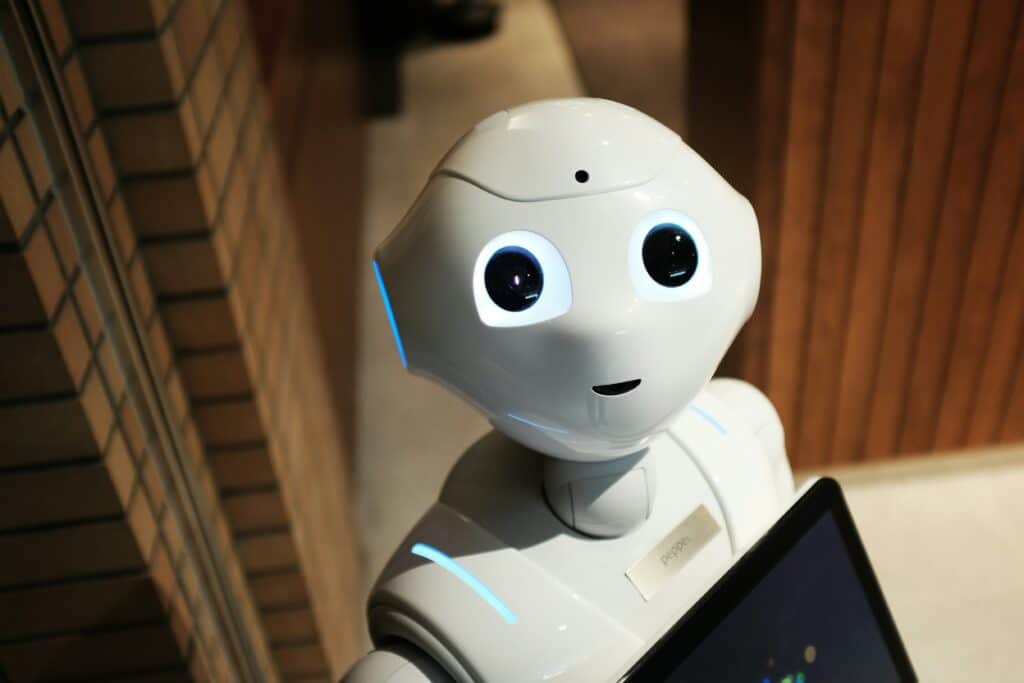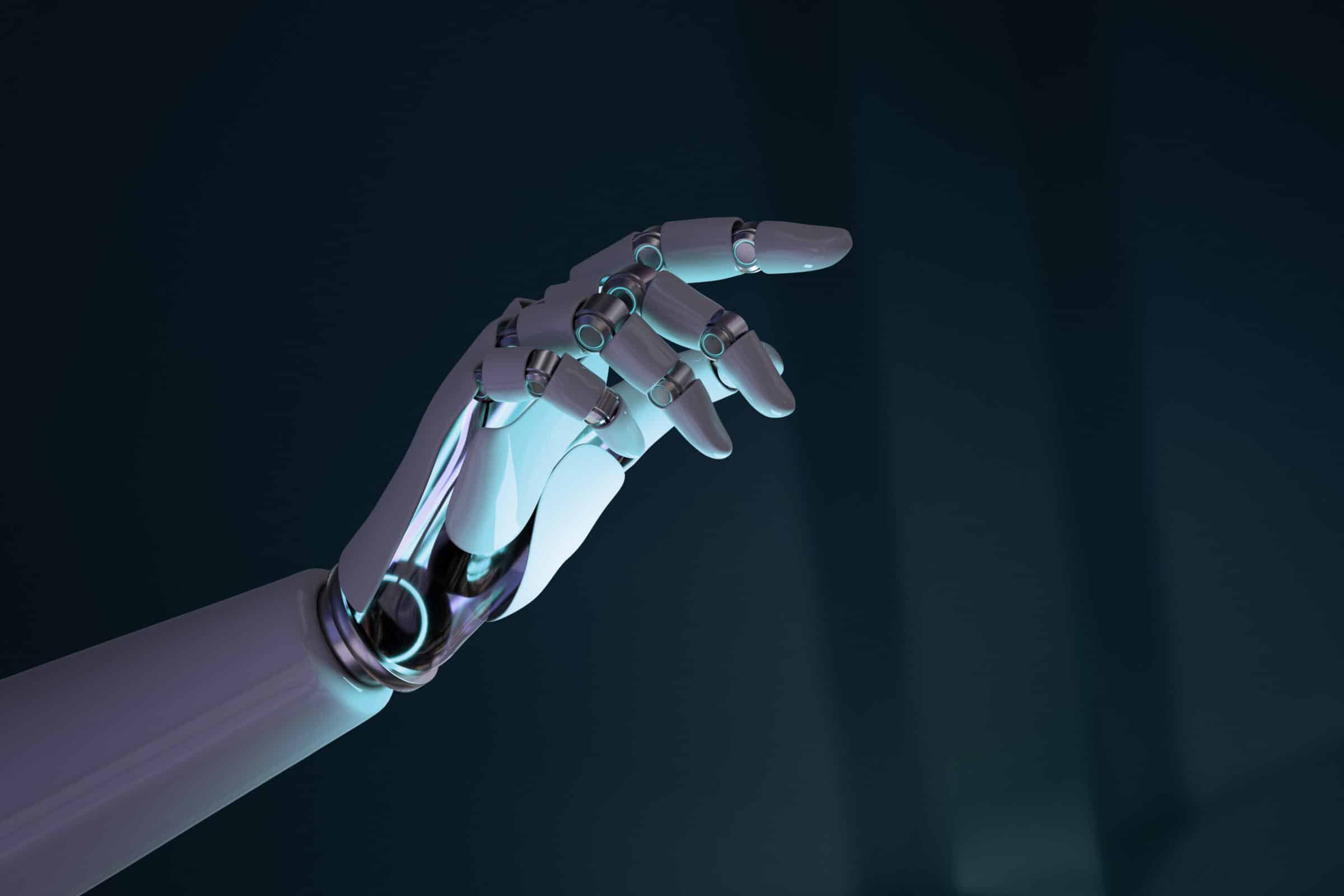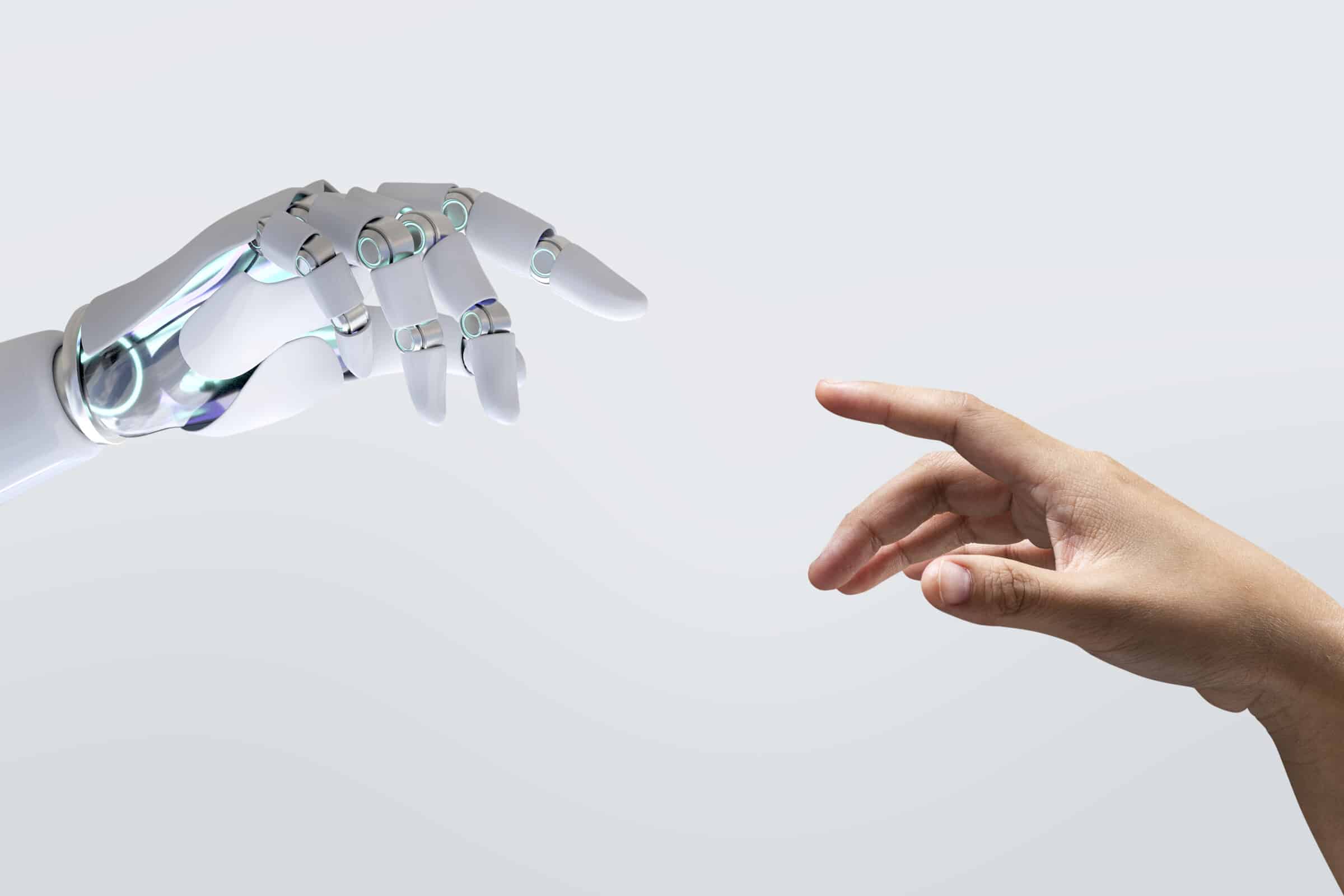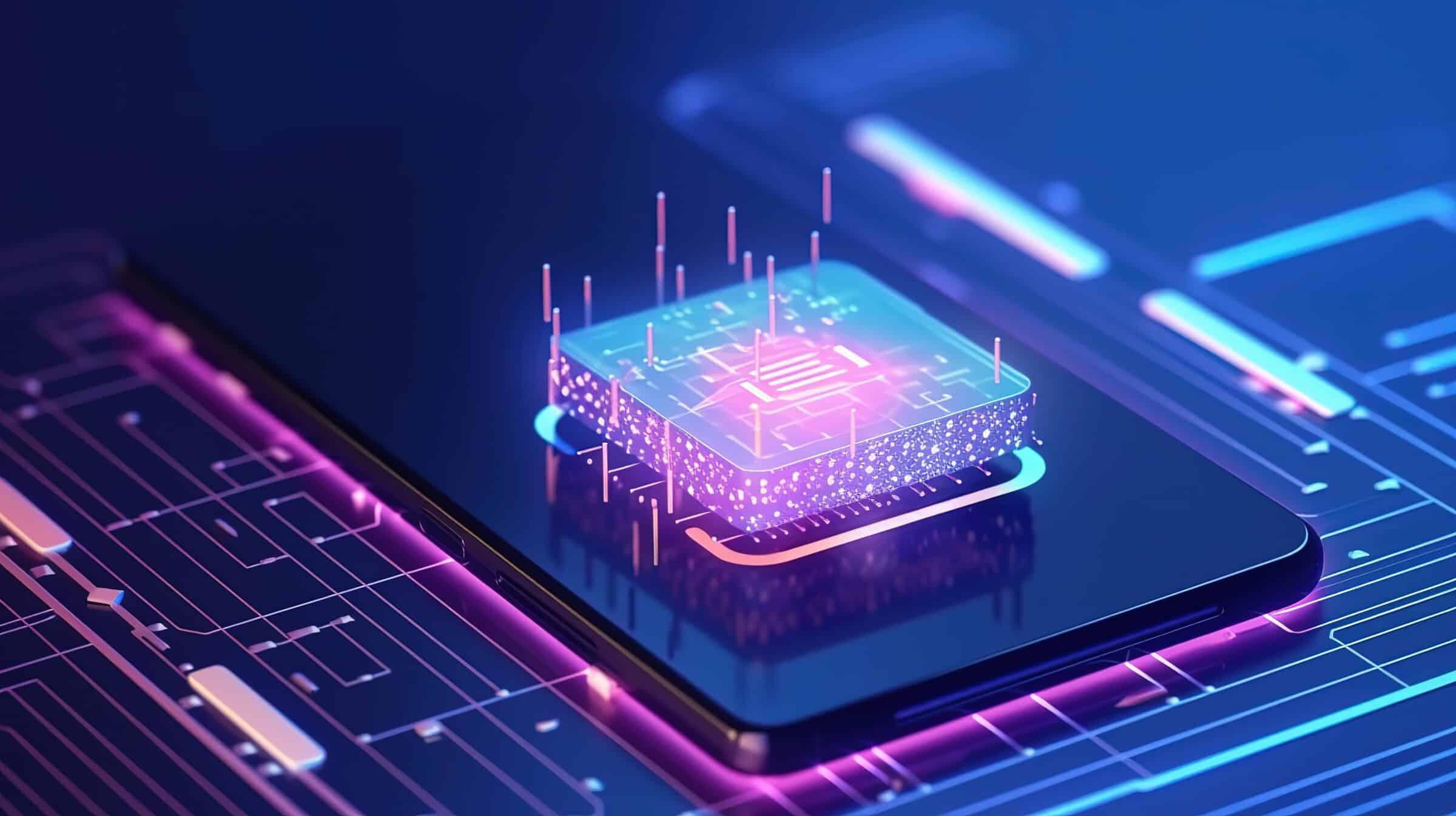An Introduction to AIoT
AIoT, or Artificial Intelligence of Things, is a combination of artificial intelligence and the Internet of Things that has quickly transformed not only the telecommunications industry – but the entire world.
AIoT is an innovative technology that combines powerful AI algorithms with the vast network of interconnected devices and sensors characteristic of IoT to create smart, efficient, and autonomous systems.
The constructive interaction between AI and IoT holds immense potential for various sectors, promising to revolutionise everyday processes by enhancing decision-making and providing deeper insights into consumer behaviour.
On a larger scale, AIoT is streamlining workplace operations, reducing task time by up to 50% in some instances (https://medium.com/@ibrahimmukherjee/how-much-time-can-generative-ai-save-in-the-workplace-3b2f9ed7fa6f, 2023). This increased efficiency is not without its critics, with many considering the negative social and ethical effects of widespread AI implementation.
Despite concerns, there is no denying that AIoT is set to redefine the landscape of technology, driving innovation towards more intuitive and predictive solutions.
In this blog post, we will explore the impact IoT and AI have already had on countless industries and what this means for the future of technology. Keep reading to find out more.
What is IoT?
The Internet of Things (IoT) is an advanced technology that connects physical devices, sensors and objects to the internet, allowing them to collect and share data in real-time.
These connected devices range from consumer products like smart thermostats and wearable devices to industrial equipment and machinery – all communicating with each other through a tailored network.
IoT SIM cards are a crucial part of any IoT operation as they provide the essential connectivity required to transmit data across the network, enabling IoT devices to communicate reliably and securely from remote locations.
The global adoption of IoT has made our lives more convenient with smart homes, crop management and connected cars – often without the average person even realising.
IoT’s implementation has transformed entire industries like healthcare, transportation, and manufacturing by using enormous quantities of real time data from interconnected devices to improve efficiency and decision-making.
A key aspect of an IoT system is the control loop. A control loop is a system that monitors and adjusts itself based on a desired output.
In the case of IoT, this involves connecting various devices and sensors to a network, allowing them to communicate with each other and exchange data in real-time.
What is AI?
Artificial intelligence (AI) is a branch of computer science which aims to create intelligent machines that can perform tasks that would typically require human intelligence. This includes learning, problem-solving, decision-making, and more.
In the telecommunications industry, AI manages and analyses enormous amounts of data, anticipates network errors, optimises traffic flow, and tailors customer interactions.
It also automates routine tasks like monitoring network infrastructure through expert systems, thereby reducing downtime and improving reliability.
Modern AI takes multiple forms, with each form being used to solve different problems in a variety of ways when applied to specific use cases:
- Rule-based AI: This type of AI relies on predefined rules and logic to make decisions. It is commonly used in applications such as chatbots and virtual assistants.
- Machine Learning (ML): ML involves training algorithms to learn from data and make decisions without being explicitly programmed for each scenario. This type of AI is used in predictive analytics and recommendation systems.
- Deep Learning (DL): DL is a subset of ML that uses complex neural networks to process substantial amounts of data and make highly accurate predictions. It is commonly used in applications such as image recognition and natural language processing.
- Generative AI: The most used kind of AI after being popularised by ChatGPT, this type of AI involves creating updated content or information based on existing data. It is used in applications such as creative writing and idea generation.
- Inference or neural networks: Neural networks are a type of AI that mimics the structure and function of the human brain. They are used in applications such as speech recognition and autonomous vehicles.
Although these types of AI are used in different contexts, the common element between all AI technologies is the ability to mimic human cognitive functions – or at least that is the aim.
The Four Different Types of AI
AI technology is evolving at a rapid rate, with new advancements and applications emerging every day.
For many, AI’s future has already been mapped out, with an ambitious end goal of creating machines that possess general intelligence and are capable of learning, reasoning, making judgements and even experiencing emotions like humans.
Looking from the eyes of a developer, the question was never if we should develop AI, but rather the question of how far AI can be taken. However, there is still a long way to go before we achieve this level of AI development.
Below are the four distinct types of AI, past, present, and future, and what distinguishes them:
- Reactive AI: This form of artificial intelligence is designed to respond to certain prompts or inputs without any prior learning or memory capabilities. It operates based on pre-programmed rules or behaviours to accomplish specific tasks.
- Limited Memory AI: This category of artificial intelligence encompasses systems that can learn from past experiences to make decisions. Unlike reactive AI, Limited Memory AI uses historical data as a reference, which means it can improve over time, leading to more accurate predictions and informed decision-making processes.
- Theory of Mind AI: This advanced form of AI is the next milestone for AI’s evolution and is based on the psychological concept of understanding that others have their own beliefs, desires, intentions, and perspectives. With its potential ability to interpret and anticipate human emotions and needs, Theory of Mind AI can predict the behaviour of humans and other intelligent species to a high degree of accuracy, at least when compared to previous types of AI.
- Self-Aware AI: This is a hypothetical tier of artificial intelligence that not only understands and interprets human emotions and needs but also possesses its own consciousness and self-awareness. A self-aware AI system would be able to comprehend its existence, reflect on its thoughts and actions, and potentially possess emotions, leading to an unprecedented level of machine autonomy.
How Are IoT and AI Being Used Together?
While AI may feel like a new technology that has changed the world overnight, it has actually been ingrained in many industries for years, helping to streamline processes and improve efficiency.
With the rise of IoT, AI has found a new application that is helping to push the boundaries of what is possible. By combining the capabilities of IoT devices with the intelligence and decision-making power of AI, businesses can collect valuable data from their connected systems and use it to make more informed decisions and improve processes.
Otherwise known as AIoT, the integration of AI and IoT has vastly improved many modern IoT applications, providing IoT devices with the heightened capability to perform complex data analysis and make intelligent decisions.
In many use cases, AIoT is used in combination with edge computing, which involves processing data at the edge of a network instead of sending it to a centralised cloud server. This allows for faster decision-making and more efficient use of resources, making AIoT an ideal solution for real-time applications, such as autonomous vehicles and smart homes.
Intelligent automation is another key aspect of AIoT solutions, wherein machines can learn from and adapt to their environment, making them more efficient and effective in completing tasks. This has led to advancements in areas such as self-driving cars, smart manufacturing, and smart agriculture.
Following on from this, an AIoT operation will use either Machine Learning algorithms or Deep Learning algorithms to streamline the data collected from sensors and other connected devices. The data collected can then be used for predictive maintenance, real-time decision making or automation of certain processes.
However, the AIoT algorithm used will depend on the use case.
For instance, ML algorithms are often employed in predictive maintenance, wherein AI analyses data from various sensors to predict potential equipment failures before they occur, thereby preventing costly downtime.
On the other hand, DL algorithms, with their ability to process and analyse vast quantities of unstructured data, excel in applications such as facial recognition security systems.
By combining real-time data capture from IoT devices with the advanced pattern recognition capabilities of Deep Learning, security systems can monitor and respond effectively to potential threats with increased precision.
What’s more, many large companies use AI-based encryption algorithms for their IoT operation, such as Advanced Encryption Standard (AES), to securely process large quantities of sensitive data.
Therefore, the choice between Machine Learning and Deep Learning in AIoT use cases is dictated by the complexity of tasks and the nature of the data being processed.
Real-World AI IoT Applications
With the integration of AI and IoT being seamless, sectors around the world have quickly realised the benefits of AIoT technology in their operations.
For example, AI’s ability to quickly create, process and analyse large quantities of real-time data, has proven especially important within modern smart cities, such as Singapore and Dubai.
From waste management and smart street lighting to public transportation and traffic management, the introduction of AI to IoT smart city operations has led to a more efficient experience for citizens living in each respective city, helping to improve their quality of life.
The capabilities and applications of AIoT, however, extend far beyond smart cities.
In the healthcare sector, IoT medical devices that can monitor patients’ vitals in real time are being combined with AI algorithms to detect any changes in health patterns and alert medical professionals to any potential issues. This has led to improved patient care and reduced healthcare costs.
Additionally, in the agriculture industry, AIoT is being used to monitor environmental conditions, crops and livestock, reducing manual labour and allowing for proactive decision-making based on real-time data analysis.
AIoT has quickly engrained itself as a fundamental part of modern supply chains, providing businesses with effective solutions for inventory management and predictive maintenance that, in turn, streamlines production processes and improves efficiency.
By driving innovation and transforming industries, IoT and AI have quickly become some of the most powerful tools for businesses around the world. AIoT’s applications are endless, and in many ways, we are left with only one way to look – forward.
The Future of AI and IoT
With both IoT and AI evolving at rapid rates, it is safe to say that we have barely scratched the surface of AIoT’s capabilities. But what is the future of AIoT?
The list of future possibilities for AI is endless. While we cannot see into the future, we can use our sector expertise as an industry leader in IoT connectivity to make predictions about where AIoT may be heading in the coming years.
Considering that IoT adoption increased by 16% in 2023 to a staggering 16.7 billion devices globally, we can estimate that AIoT will continue to expand and become integrated into even more industries.
However, the real mystery and intrigue lies within the evolution of AI and how it will continue to grow and adapt to new or existing technologies.
Our first prediction is that developments in AI technology will naturally lead to an enhanced level of automation and security in its use cases, discovering new ways to streamline and optimise processes. This will lead to even greater efficiency, cost savings and improved decision-making in various industries.
Secondly, as AI continues to refine its data analysis abilities, we anticipate that it will soon become more predictive than reactive. AI algorithms will be able to foresee and prevent potential issues before they occur by analysing data from IoT devices, leading to reduced downtime and costs.
In turn, this enhanced understanding of analytics and data can provide businesses, users, and the public with an enhanced experience of AIoT, fostering even greater trust and acceptance of the technology.
This could be in the context of smart devices in smart homes, public services, factory machinery or simply through enhanced predictive maintenance in commercial and industrial environments.
Finally, the combination of AIoT systems with other emerging technologies, such as 5G, blockchain and augmented reality, is set to revolutionise industries in ways we can only begin to imagine.
The true potential of AIoT lies in the collaboration and integration of various technologies, providing the world with enhanced efficiency, productivity, and innovation.
As for now, one thing is evident – AIoT will continue to push boundaries and transform industries in ways that are beneficial for both businesses and society.
Industry Challenges of Using Artificial Intelligence and IoT Together
While there are many advantages to using AI as part of modern IoT solutions, there are several noteworthy challenges that must also be considered – both ethical and social.
Ethical Issues of AIoT
One of the most pressing ethical challenges presented by the integration of AI in the IoT industry is the issue of privacy. The extensive data collection capabilities of IoT devices, when combined with AI’s analytical prowess, raise concerns about the potential for intrusive surveillance and the erosion of personal privacy.
In some extreme circumstances, individuals may find their most benign daily activities are scrutinised and recorded, often without their explicit consent or awareness.
Compounding this is the issue of trust and transparency. Users must rely on the assurances of IoT service providers that their data will be used responsibly and ethically.
However, the algorithms that underpin these assurances often function as ‘black boxes,’ with operational logic that is unclear to the user, undermining trust.
Without transparent mechanisms and straightforward explanations that users can understand, the trustworthiness of AIoT systems is inherently compromised.
Security breaches, too, can have dire consequences in the AIoT sphere.
A key challenge of IoT operations around the globe is the security of IoT networks, thus, ensuring robust cybersecurity measures is critical, as breaches can lead to the exploitation of both personal and corporate data, pecuniary loss, and even harm to physical well-being in scenarios where critical infrastructure is compromised.
Lastly, accountability remains an important question in AIoT implementation. When decisions are made by automated systems, it can be difficult to determine responsibility for mistakes or biases in outcomes. Establishing clear accountability protocols is integral to ensuring that ethical lapses can be addressed and rectified.
Social Challenges of AIoT
In addition to the ethical challenges, the social implications of combining AI with IoT warrant significant attention.
One such challenge is the impact on employment. The integration of AI-powered IoT devices can streamline processes and increase productivity, but it also raises the issue of job displacement.
As AIoT system capabilities expand to encompass roles traditionally performed by humans, there is a genuine risk of unemployment for certain sectors of the workforce—prompting calls for strategies to manage the transition and retraining opportunities.
In the modern day, there have already been minor examples of AI taking human job roles, such as in chat rooms. However, the focus going forward for many sectors is to discover ways AI can enhance job roles rather than replace them.
Misuse and abuse of AI technologies also represent another serious social concern. There is potential for such systems to be employed for nefarious purposes, such as unauthorised surveillance, data manipulation, and even targeted misinformation campaigns.
The dual-use nature of AIoT necessitates rigorous oversight and governance to mitigate the threat of malicious exploitation.
Each of these social and ethical challenges underscores the need for a considered and concerted approach to AIoT development and implementation.
It is crucial for all stakeholders in the AIoT industry to engage with these challenges proactively, not only to foster innovation and growth but to ensure that such advancement is responsible, equitable, and respects the fundamental rights and dignity of all involved.
Importance of Choosing the Right AI Tool
As we touched on earlier in this research article, AI comes in many forms, each with its own strengths and limitations.
It is crucial for companies to choose the right AI tool that will best suit the needs of their IoT operation. For instance, there are machine learning algorithms designed specifically for predictive maintenance while others excel in image recognition tasks and natural language processing.
To further complicate matters, certain AI tools may perform differently when paired with different IoT devices or data sources.
Additionally, many AI tools require bespoke configuration and training to function effectively, which can vary widely depending on the application.
For example, in smart cities, deep learning algorithms are used to analyse traffic patterns and adjust signals to improve flow, whereas, in healthcare, predictive analytics might be employed to monitor patient vitals and predict medical events.
In industrial automation, AI tools are tasked with real-time quality inspection using computer vision, demanding a different suite of capabilities than those used in natural language processing for customer service chatbots.
The specificity of each AI application necessitates a careful selection process, ensuring that the chosen AI tool aligns with the intended use case and is compatible with the requisite IoT devices and infrastructure.
Seamless IoT Connectivity Tailored to Your Needs
In summation, the rapidly growing world of AIoT presents both monumental opportunities and significant challenges.
The intricate fusion of intertwining advanced algorithms with a sea of connected devices demands not only a robust ethical and social framework but also a tailored technological approach.
In this landscape, Caburn Telecom emerges as an industry leader in IoT connectivity solutions, offering bespoke solutions that cater to the nuanced needs of businesses.
Caburn Telecom’s expertise ensures that organisations can navigate the complexities of AIoT with confidence, delivering seamless connectivity that powers innovation while upholding the highest standards of security, efficiency, and responsible deployment.
To learn more about how you can uncover a tailored IoT connectivity solution designed around your unique business goals, contact a member of our team today.






